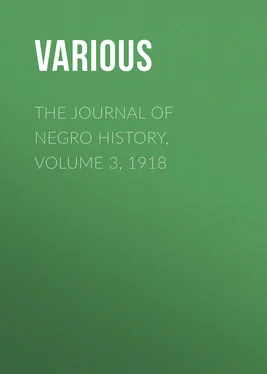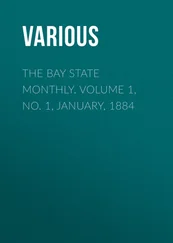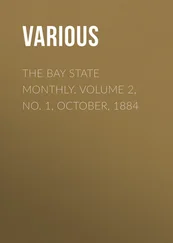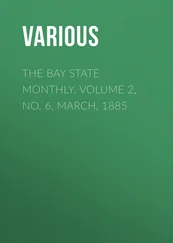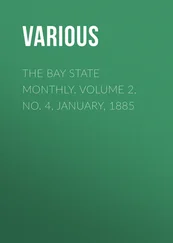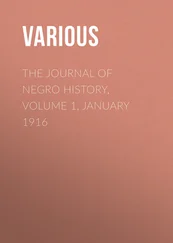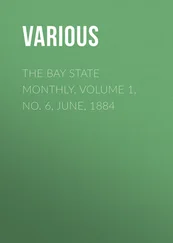Various - The Journal of Negro History, Volume 3, 1918
Здесь есть возможность читать онлайн «Various - The Journal of Negro History, Volume 3, 1918» — ознакомительный отрывок электронной книги совершенно бесплатно, а после прочтения отрывка купить полную версию. В некоторых случаях можно слушать аудио, скачать через торрент в формате fb2 и присутствует краткое содержание. Жанр: foreign_antique, periodic, История, foreign_edu, на английском языке. Описание произведения, (предисловие) а так же отзывы посетителей доступны на портале библиотеки ЛибКат.
- Название:The Journal of Negro History, Volume 3, 1918
- Автор:
- Жанр:
- Год:неизвестен
- ISBN:нет данных
- Рейтинг книги:5 / 5. Голосов: 1
-
Избранное:Добавить в избранное
- Отзывы:
-
Ваша оценка:
- 100
- 1
- 2
- 3
- 4
- 5
The Journal of Negro History, Volume 3, 1918: краткое содержание, описание и аннотация
Предлагаем к чтению аннотацию, описание, краткое содержание или предисловие (зависит от того, что написал сам автор книги «The Journal of Negro History, Volume 3, 1918»). Если вы не нашли необходимую информацию о книге — напишите в комментариях, мы постараемся отыскать её.
The Journal of Negro History, Volume 3, 1918 — читать онлайн ознакомительный отрывок
Ниже представлен текст книги, разбитый по страницам. Система сохранения места последней прочитанной страницы, позволяет с удобством читать онлайн бесплатно книгу «The Journal of Negro History, Volume 3, 1918», без необходимости каждый раз заново искать на чём Вы остановились. Поставьте закладку, и сможете в любой момент перейти на страницу, на которой закончили чтение.
Интервал:
Закладка:
Liele's work in Jamaica began in September, 1784. He started in Kingston by preaching in a private house to a small congregation. Next, he organized a church with four other men who had come from America. His message had a telling effect especially on the slaves. The effectiveness of his work is also seen from the fact that persecutions at baptisms and meetings which were, at first, frequent, later became a less serious hindrance. Upon frequent petitions, however, the Jamaica Assembly finally granted free worship of God to all those desiring it. So successfully did Liele work that in a short while he had in the country together with well wishers and followers about fifteen hundred communicants, to whom he preached twice on each Sunday, in the morning and afternoon, and twice in the week. 192
The work of the church was extended by a few deacons and elders, and by teachers of small congregations in the town and country. Thomas Nichols Swigle became Liele's chief assistant. His particular work was to regulate church matters, serve as deacon, and also to teach a free school opened for the instruction of free and slave children. The work continued to spread through Swigle, who became a minister after the order of Liele. He said: "About two months ago, I paid my first visit to a part of our church held at Clinton Mount, Coffee Plantation, in the Parish of Saint Andrew, about sixteen miles distance from Kingston, in the High mountains, where we have a chapel and 254 brethren." About his work in general he said: "I preach, baptize, marry, attend funerals, and go through every work of the ministry without fee or reward." 193
It was soon evident that there must be some definite place of worship. To this end a piece of land about three acres at the east end of Kingston was purchased for the sum of about 155 pounds and on it a church building fifty-seven by thirty-seven feet was begun. Because the congregation was poor and gifts were small, Liele had a struggle to complete his building. He interested in his cause several gentlemen of influence, among whom was a Mr. Stephen Cooke, a member of the Assembly, who in turn asked help of friends in England. By January 12, 1793, he was able to say that not only was the Kingston church completed but that in Spanish Town also he had purchased land for a cemetery with a house on it which served as a church building. The Kingston church, the first of its kind in Jamaica, under the leadership of Liele had twelve trustees, all of whom were members of the congregation, whose names were specified in the title recorded in the office of the secretary of the island. 194
While establishing the churches at Savannah and at Jamaica, Liele received nothing for his services. He was on a mission and without charge preached, baptized, administered the Lord's Supper, and travelled from one place to another to settle church affairs. He did this so as not to be misunderstood and not to hinder the progress of the church of Christ. Mr. Stephen Cooke, in giving his opinion of Liele, said that he was "a very industrious man, decent and humble in his manners, and, I think, a good man." His family life was pleasant. He had a wife and four children, three boys and a girl. Liele followed farming for a regular occupation, but because of the uncertain seasons in Jamaica, kept horses and wagons for employment in local transportation for the government by contract. He was business-like and kept the good will of the public. Although busy, Liele found time to read some of the good books which he had in his meager collection and also to write letters explaining the growth of his work in Jamaica and inquiring after the progress of the church at Savannah, then pastored by Andrew Bryan. 195
In building up the membership of his churches Liele showed great tact. Unlike the Methodists who were rapidly coming forward at this time, he would not receive any slaves who had not permission of their owners. This not only increased the membership of the church but it made friends for their cause among the masters and overseers. So careful was Liele to get the confidence of the masters and overseers that he ordered a bell for his church just a mile and a half out of Spanish Town in Jamaica, not particularly to give warning to the slaves about the time of meeting, but to the owners of slaves that they might know the time when their slaves should return to the plantations. The church covenant, a collection of certain passages of Scripture, which was used once a month, was shown to members of the legislature, the magistrates and justices to secure their approval that they might give their slaves permission to become members of the congregation. 196
The effect of the work of Liele is well narrated in a statement of an overseer who sat at breakfast with Swigle at Clinton Mount, sixteen miles from Kingston. He said that he did not need an assistant nor did he make use of the whip, for whether he was at home or away, everything was conducted as it should have been. The slaves were industrious, with a plenty of provision in their ground and a plenty of live stock in their barns; and they, one and all, lived together in unity, brotherly love and peace. With a mission to serve, this man then made his way into the hearts of his fellows.
Andrew Bryan, the other pioneer, was born in 1737 at Goose Creek, South Carolina, about sixteen miles from Charleston. His mother was a slave and died in the service of her master. His father, also a slave, became infirm with years, dying at the age of one hundred and five. Andrew became converted under the preaching of George Liele when the latter served the church in Savannah. Bryan married a woman named Hannah about nine years after his conversion. His wife remained a slave in the service of Jonathan Bryan for a long time after her marriage, but was finally purchased by her husband. 197
Andrew Bryan began to preach to congregations of black and a few white people at Savannah just eight or nine months after Liele's departure for Jamaica. Edward Davis encouraged Bryan and his followers to erect a building on his land in Yamacraw for a place of worship, of which they were later artfully dispossessed. In the beginning of their worship, frequent interruptions came from the whites. It was at a time when many Negro slaves had absconded, and some had been taken away by the British. This was an excuse for the wickedness of the whites, who then became more cruel in whipping and imprisoning the worshipers, undertaking to justify their action before the magistrates. When George Liele was preaching in and near Savannah, he did not suffer from such molestation, because the British then ruled the country, but Andrew Bryan began his work under different conditions about the time when Georgia became independent.
For refusing to discontinue his work Andrew Bryan was twice imprisoned. Sampson, his brother, who was converted about one year after Andrew was, remained with him, however, in all of his hard trials. On one occasion about fifty slaves were severely whipped. Among these was Andrew, who was cut and bled abundantly. While he was yet under their lashes, Hambleton says he rejoiced, not only to be scourged but would freely suffer death for the cause of Jesus Christ. Jonathan Bryan, their kind master, was much affected and grieved over their punishment and interceded for them. George Walton said "that such treatment would be condemned even among barbarians."
Конец ознакомительного фрагмента.
Текст предоставлен ООО «ЛитРес».
Прочитайте эту книгу целиком, купив полную легальную версию на ЛитРес.
Безопасно оплатить книгу можно банковской картой Visa, MasterCard, Maestro, со счета мобильного телефона, с платежного терминала, в салоне МТС или Связной, через PayPal, WebMoney, Яндекс.Деньги, QIWI Кошелек, бонусными картами или другим удобным Вам способом.
Читать дальшеИнтервал:
Закладка:
Похожие книги на «The Journal of Negro History, Volume 3, 1918»
Представляем Вашему вниманию похожие книги на «The Journal of Negro History, Volume 3, 1918» списком для выбора. Мы отобрали схожую по названию и смыслу литературу в надежде предоставить читателям больше вариантов отыскать новые, интересные, ещё непрочитанные произведения.
Обсуждение, отзывы о книге «The Journal of Negro History, Volume 3, 1918» и просто собственные мнения читателей. Оставьте ваши комментарии, напишите, что Вы думаете о произведении, его смысле или главных героях. Укажите что конкретно понравилось, а что нет, и почему Вы так считаете.
